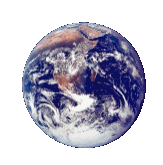|
| September 3, 2013 |
| |
The Scientific Case for Anthropogenic Warming I,
Richard McGehee, School of Mathematics |
| |
|
The scientific evidence for global warming and for the impact of
human activity on the climate will be presented and discussed. |
| |
download slides |
| September 10, 2013 |
| |
The Scientific Case for Anthropogenic Warming II,
Richard McGehee, School of Mathematics |
| |
|
The scientific evidence for global warming and for the impact of
human activity on the climate will continue to be discussed. |
| |
download slides |
| September 17, 2013 |
| |
An Introduction to Ocean Box Models,
Julie Leifeld, School of Mathematics |
| |
|
Box models can be used to conceptualize phenomena such as salinity and temperature gradients determining ocean circulation. This talk presents an introduction to some of these models. |
| |
download slides |
| September 23, 2013 |
| |
Quasi-periodic fluctuations in climate due to sea ice,
Raj Saha, School of Mathematics, MCRN postdoc |
| |
|
The climate record for the last 100,000 years show quasi-periodic, abrupt fluctuations in the North Atlantic climate. These fluctuations, known as Dansgaard-Oeschger (D-O) events were most pronounced during glacial periods and less so, but detectable nonetheless during the warm Holocene epoch. A coupled ocean-sea ice box model is constructed which exhibits many of the characteristic features of D-O events. The model suggests that the insulating effect of sea ice plays a role in the formation of deep water by allowing large heat ventilation of the upper layers of the ocean to the atmosphere during episodes of sea ice retreat, setting up a sustained relaxation oscillation. Numerical experiments suggest that the geophysically constrained maximum sea ice extent is responsible for the observed periodicity of D-O events. |
| |
|
| October 1, 2013 |
| |
An Introduction to Energy Balance Models, Richard McGehee, School of Mathematics |
| |
|
The physical law of conservation of energy drives many of the fundamental features of the Earth's climate. |
| |
download slides |
| October 22, 2013 |
| |
Budyko's Model as a Dynamical System, Richard McGehee, School of Mathematics |
| |
|
Although Budyko's model was designed to model ice caps in terms of an equilibrium state (energy balance), it can be viewed dynamically, yielding a mathematical formulation for discussing the stability of ice caps. |
| |
download slides |
| October 29, 2013 |
| |
Celestial Influences on Glacial Cycles, Richard McGehee, School of Mathematics |
| |
|
We explore both the
theory and the evidence that subtle changes in Earth's
orbit caused by the motions of the other planets act to pace the glacial cycles of the last five million years.
|
| |
download slides |
| November 5, 2013 |
| |
Recent Developments in the Theory of Glacial Cycles, Richard McGehee, School of Mathematics |
| |
|
Paleoclimate data gathered in the last thirty years have challenged previous theories and have given rise to a variety of models. |
| |
download slides |
| November 12, 2013 |
| |
The Compost-Bomb Instability and the PETM, Jonathan Hahn, School of Mathematics |
| |
|
The Paleocene-Eocene Thermal Maximum (PETM) was a massive spike in temperature and injection of carbon in the atmosphere 55 million years ago. One of many theories for its occurrence is called the "compost-bomb": a rapid release of peatland soil carbon into the atmosphere. We will discuss some of the dynamics of peatlands that could cause this to happen. |
| |
download slides |
| November 26, 2013 |
| |
Carbon storage in northern peatlands, Clarence Lehman, Department of Ecology, Evolution and Behavior |
| |
download slides |
| December 3, 2013 |
| |
Isotopes as Climate Proxies, Richard McGehee, School of Mathematics |
| |
|
Isotopes of hydrogen, carbon, and oxygen are used extensively as proxies for temperature, ice volume, and biological activity. This presentation will be an introductory discussion of how they are measured and interpreted. |
| |
download slides |
| December 10, 2013 |
| |
Carbon Isotopes Since the Last Glacial Maximum, Richard McGehee, School of Mathematics |
| |
|
Recent work by Schmidt et al on atmospheric 13C measured in Antarctic ices cores adds to the mystery of where the carbon hid during the last glaciation. |
| |
download slides |
|
